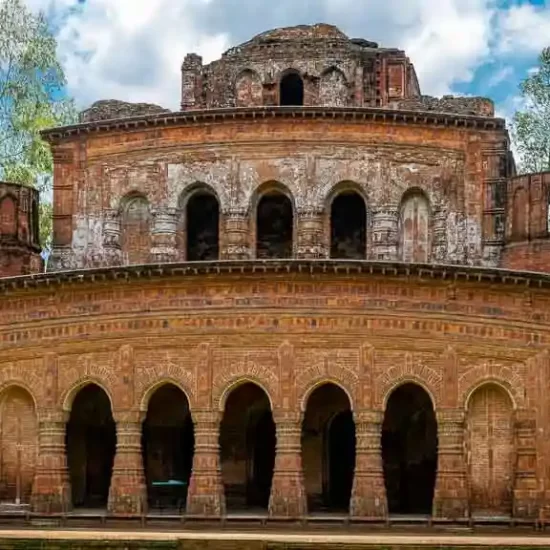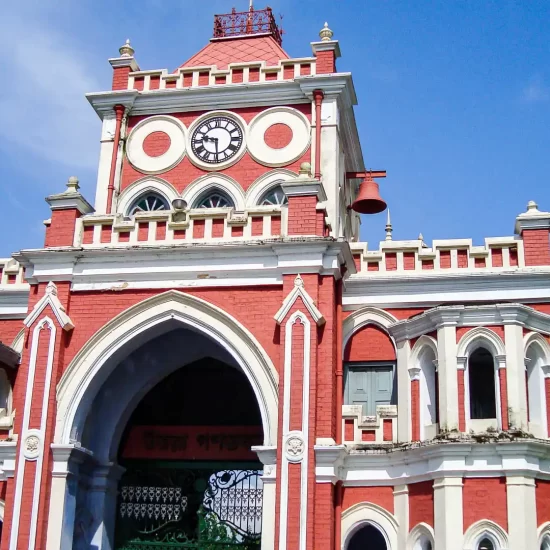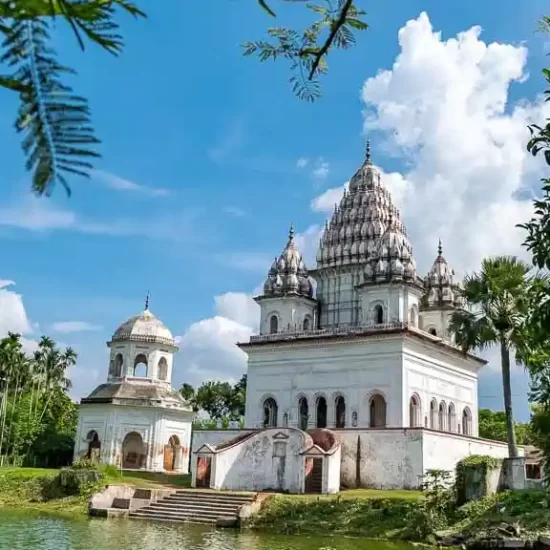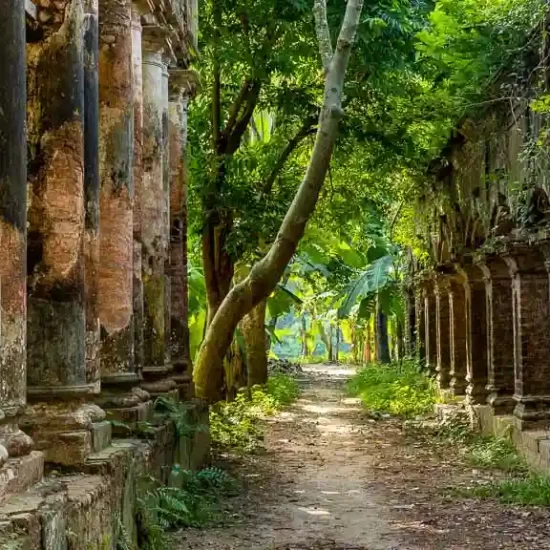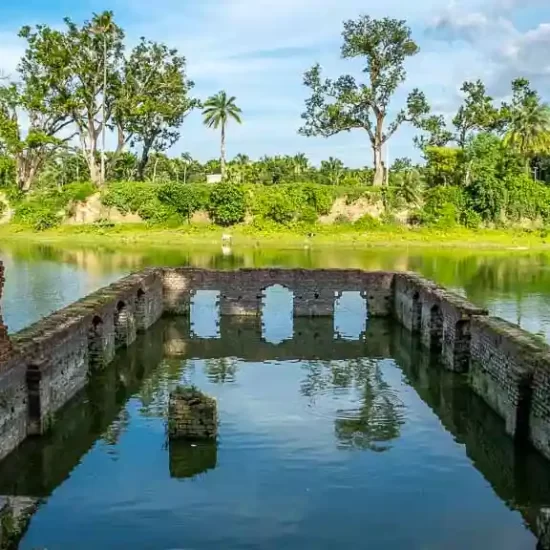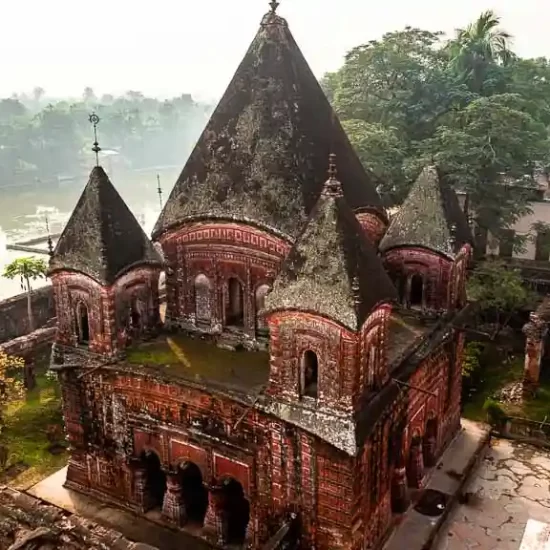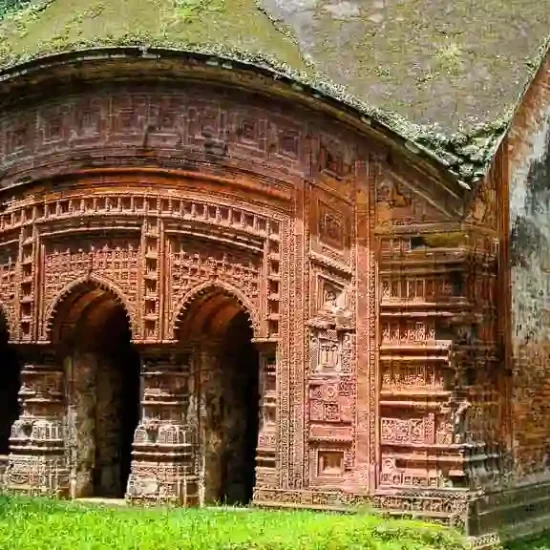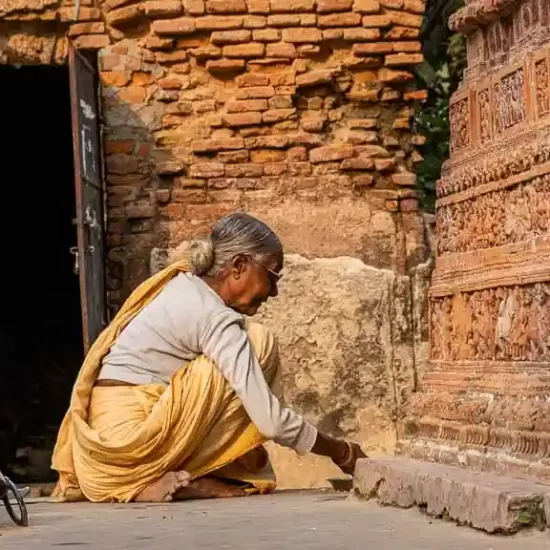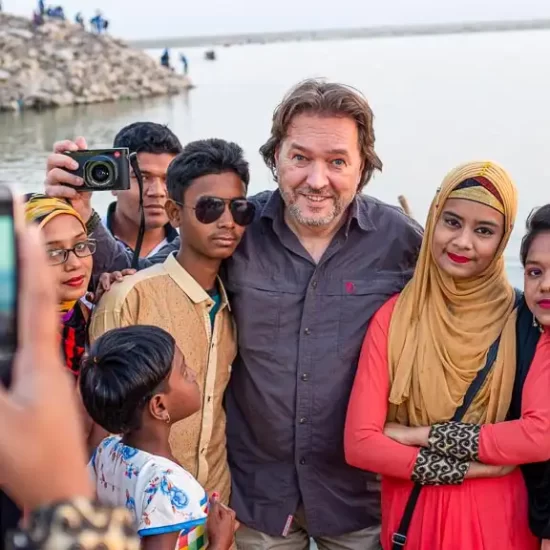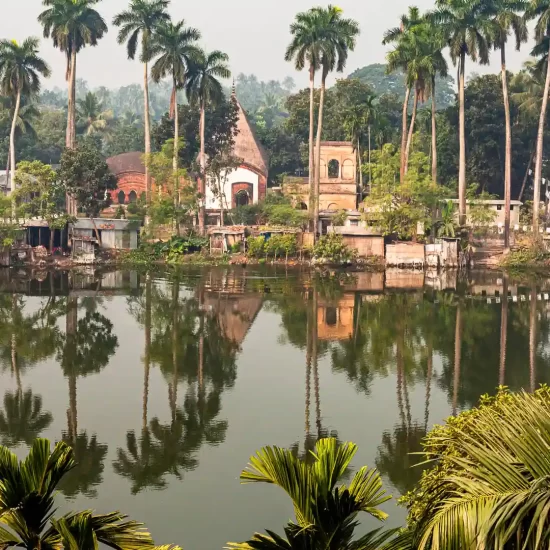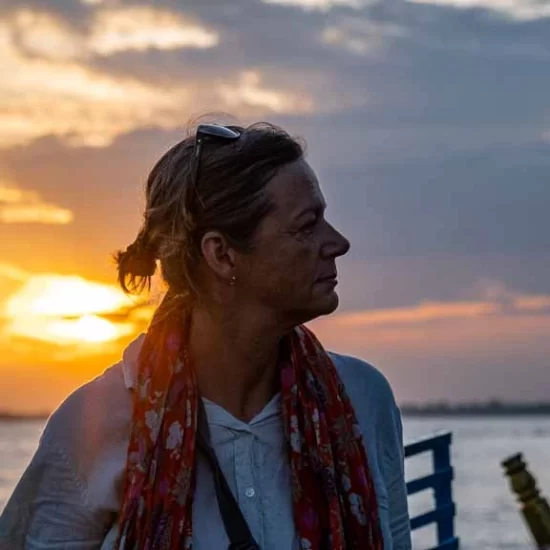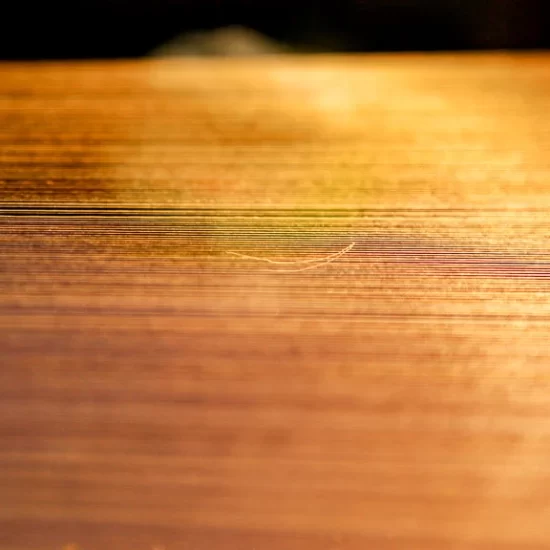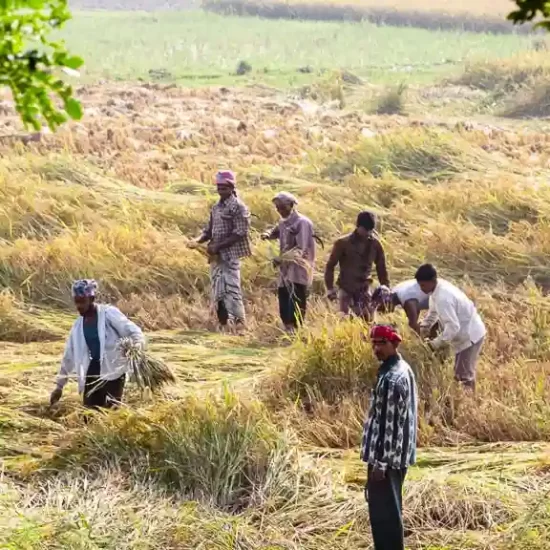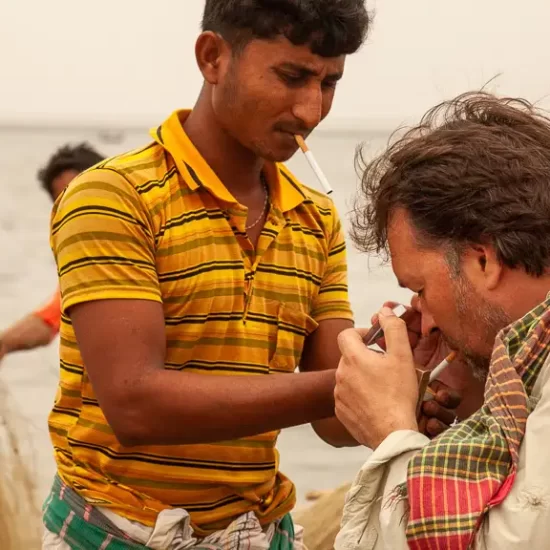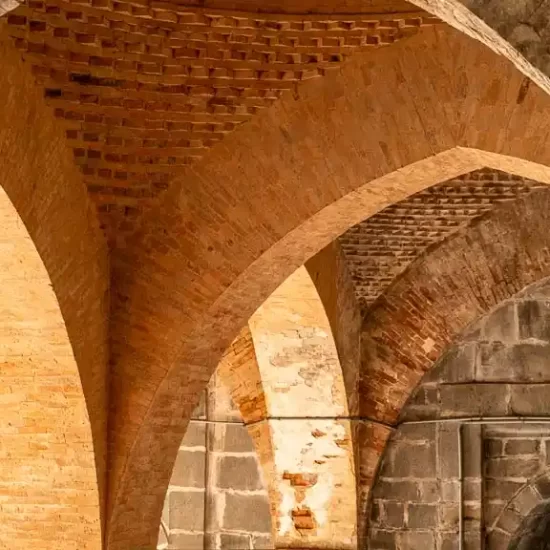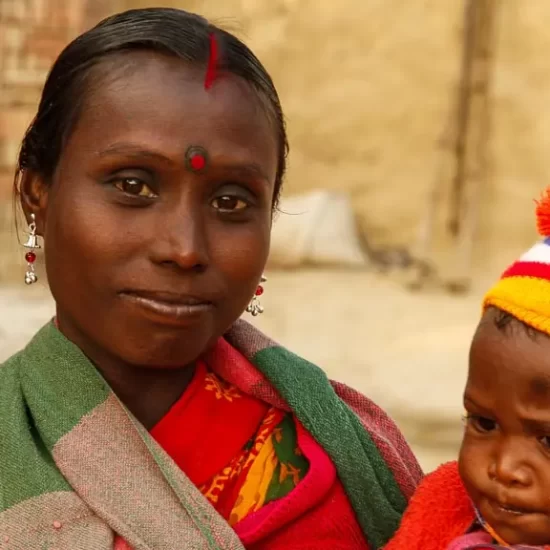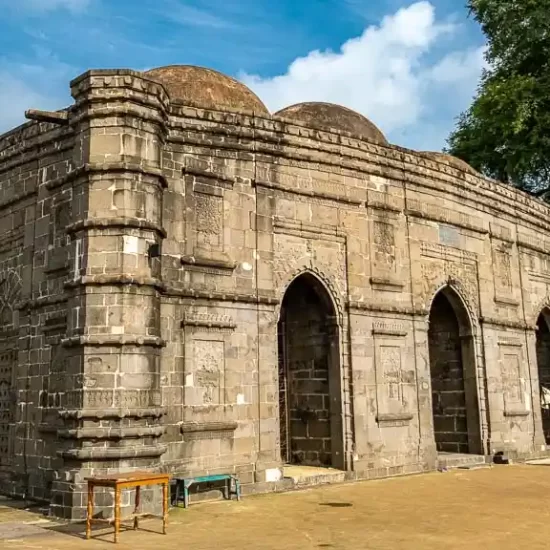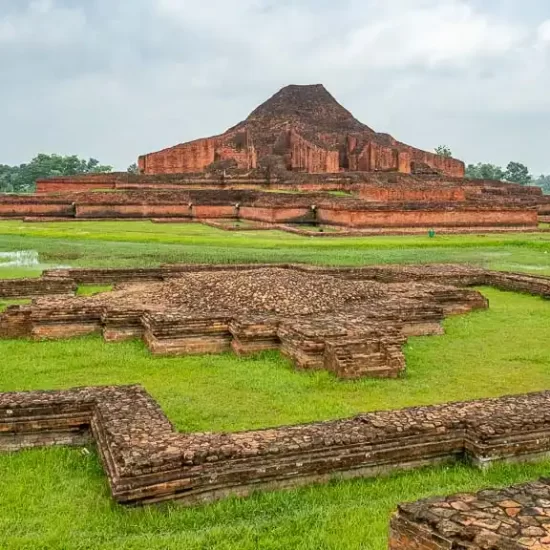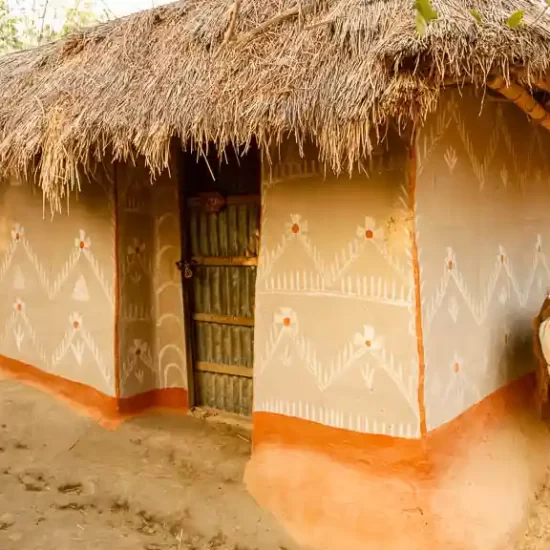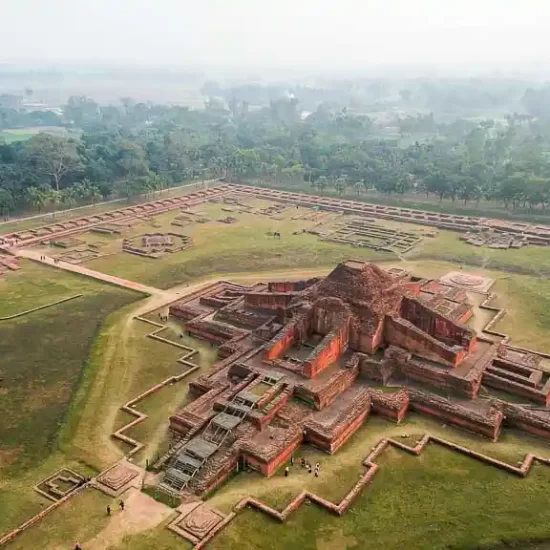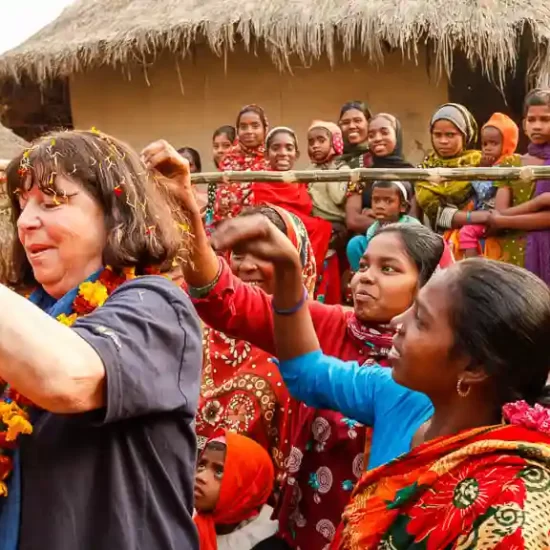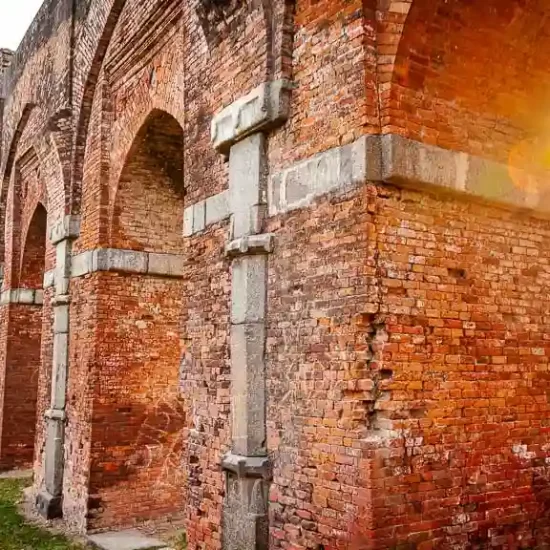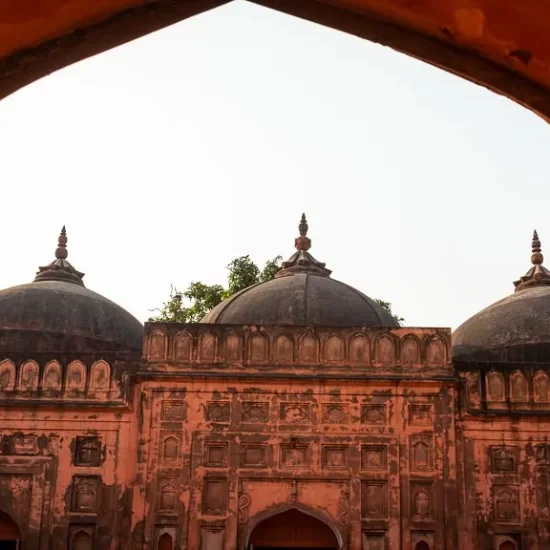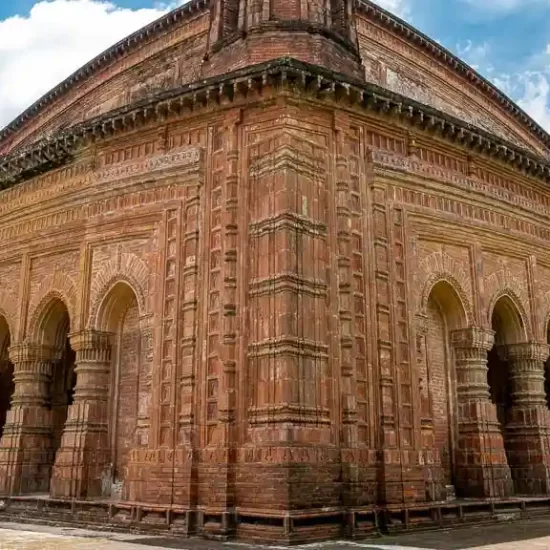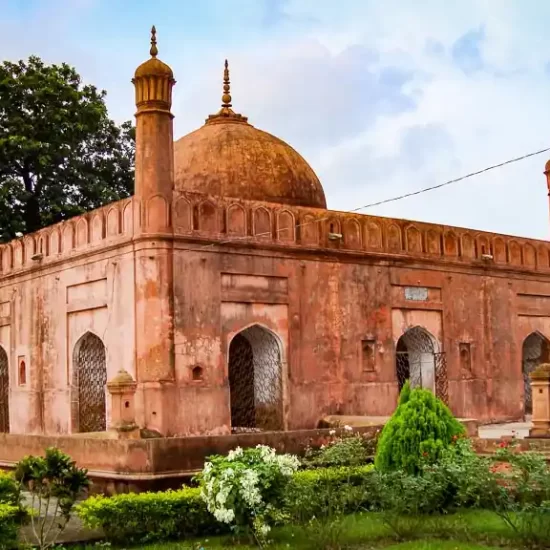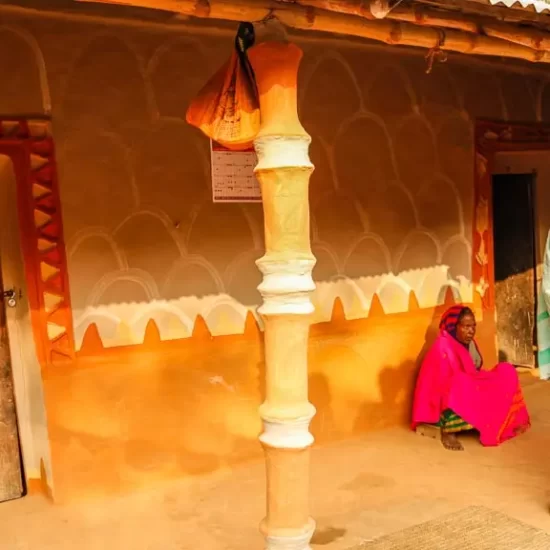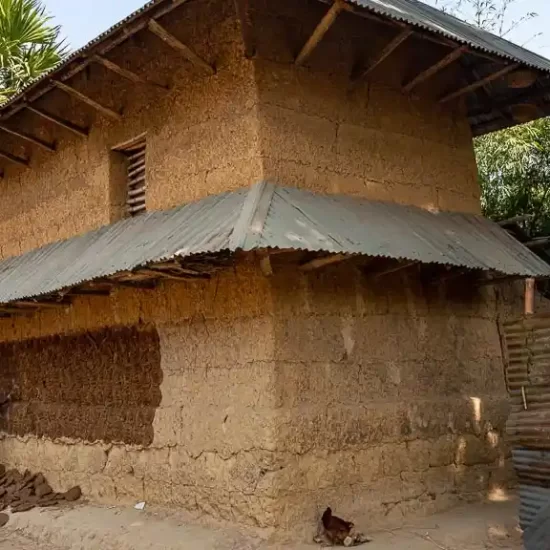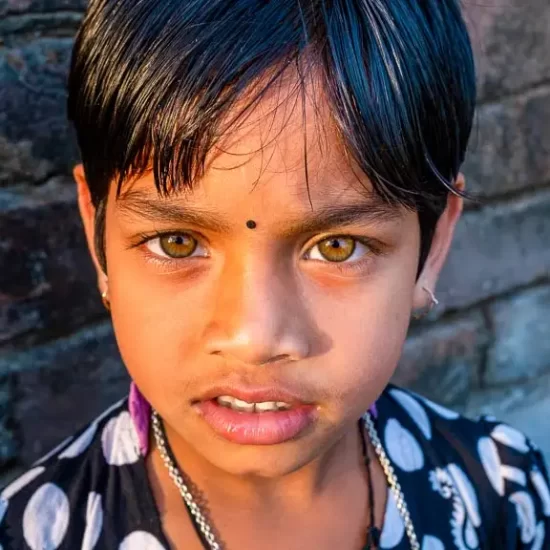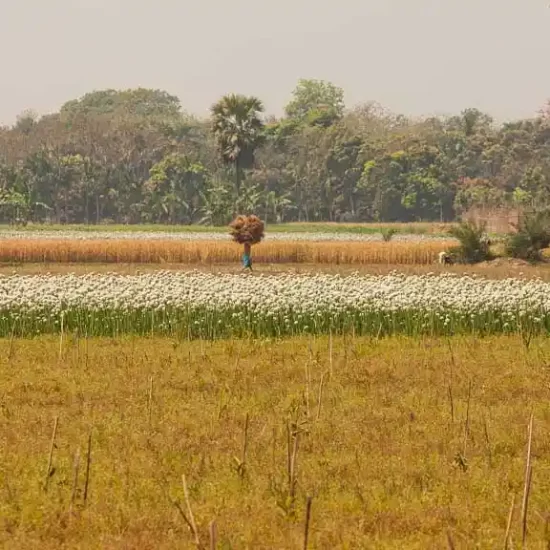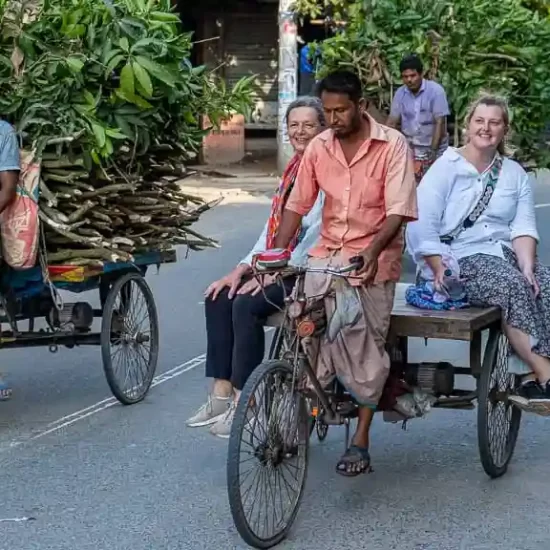Your cart is currently empty!
Diverse Faiths and Shared Culture
$399 tour starting at
A Journey through Hindu, Buddhist, and Islamic Heritage in Bangladesh
Diverse Faiths and Shared Culture is a journey through the Hindu, Buddhist, and Islamic heritage of Bangladesh. It is impossible to imagine how Bengali culture rules over their diverse faiths; this small land of brotherhoods never had any religious boundery. Frienlyness, hospitality, and kindness are the Bengali religion. This 4-day trip presents the history, culture, lifestyle, architecture, and archaeological sites of Tangail, Sirajgonj, Natore, Puthia, Rajshahi, Gaur, Kushumba, Paharpur, and Bogra.
Primitive sari weaving, archaeological and heritage sites, local bazaar, and the famous sweet production of Tangail will be your first visits. Navaratna temples in Sirajganj are an Architectural treasure of the 18th century. Exploration continues through Natore Rajbari, Uttara Ganabhaban – a royal palace from the 18th century (1734) also known as Dighapatia Palace.
Once Puthia was called a village of Laskarpur Pargana, was named after a certain fief holder Laskar Khan. Laskar Khan has been following the examples of other Afgan chiefs of Bengal opposed the establishment of Mughal rules and abstained from paying revenue to the Mughal, during the Mughal period. Mughal emperor Akbar took punitive action against him at the end of the 16th century, and they were planning a revolution against Mughal empowerment. Bravery and trusted general Man Singh was sent to Bengal to suppress the revolutionary governors (Subeders), as an immediate order by emperor Akbar. Whereby Laskar Khan was soon evicted from his fief by General Man Singh with the collaboration of Bhatsacharya, which eventually was granted to the zamindar of Puthia. Bhatsacharya was offered to take charge of quite an area of Laskarpur which he was not interested at! Pitambar, the son of Batshacharya became the first zamindar of Laskarpur, and Puthia became the capital. Pitambar’s younger brother Nilambar was the first to get the title “Raja” from the Mughals. Pitambar did a lot of fabrications around his kingdom to secure the newly declared capital. He had built huge water tanks (Beki Chowki, Mora Chowki and Gopal Chowki) all around his palace area to ensure the security of the Royal palace from the enemy’s easy attacks. He dug a big pond (Shyam Sharobar) in the center, by the western side of the castle for beautification as well as a source of good water.
This Puthia zamindary was divided among four co-sharers among whom Panch Ani (Five Annas) and Char Ani (Four Annas) co-sharers earned recognition in conducting the zamindary in 1744. Panch Ani estate of Maharani Sarat Sundari and Maharani Hemanta Kumari was famous for the successful management of their zamindary. On the other hand, the Char Ani estate of Raja Paresh Narayan and his wife Monomohini had become famous as patrons of education and learning. The Estate of Puthia Royal Family was the wealthiest and second-largest estate in British Bengal. In the field of architectural establishments, the role of the Puthia zamindars is praiseworthy. Raja Nilambar’s successor has built some fabulous Hindu temples and a castle around the central pond, among which some of them are ruins now. Puthia has the highest number of historic temples within such a small area.
Rajshahi – The prosperous university town is famous for its sericulture (silk production). Rajshahi grows almost half of the country’s famous mangoes, litchis and the only silk industry of the country. Strolling along the mighty Padma (Ganges) River and watching the sunset is a favorite pastime of residents and visitors. A block southeast of Rajshahi Government College, on a high bank of Padma River, is one of the last remaining examples of the Indigo Factories (Neel Kuthi) that once flourished in the region, this historic structure is known as Baro Kuthi. The place has apparently been the reminder of countless crimes during British rule. Apart from these, you will still find quite a number of buildings in Rajshahi town from the Raj era period, now converted into colleges and schools.
Varendra Research Museum is the oldest (1910) and has a huge collection of rare black basalt sculptures. The predominantly British-style building has some interesting Hindu-Buddhist features. The museum has artifacts from all over the subcontinent, including some rare examples from the ancient city of Mohenjo-Daro in Pakistan and a great collection of local Hindu sculptures.
Ornamentation on the black basalt stone inside of 16th-century Kushumba mosque presents the unbelievable skills and crafting capability of artisans. Kushumba Mosque – is one of the last examples of the finest stone works in Bengal.
Somapura Mahavihara or Paharpur Buddhist Vihara is the highest Buddhist stupa south of the Himalayas and a UNESCO World Heritage site.
Mahasthangarh is standing over the graveyard of the ruins of ancient “Pundravardhana”- only a few kilometers away from Bogra town. It is the oldest known city in Bangladesh as the first Hindu capital of ancient Bengal, dating back to at least the 3rd century BC. Mahasthan archaeological site consists mainly of foundations and hillocks hinting at the past glory. This region was not only the religious center for Hindus, Buddhists, or Muslims but also was an important commercial entrepot of the silk trade, which is only a few kilometers away from Bogra. The site Museum is worth visiting and has an interesting collection of recovered pieces on display. Statues of Hindu Gods, terracotta plaques, and some bronze statues; were mostly found during the excavation of this monastery from the Pala period.
The Bengal delta is a great horseshoe shape, flat, low-lying floodplain land, the open part faces the Bay of Bengal to the south. The north and eastern edges are fenced by detached hill networks, out of this region flow some of the major rivers in southern Asia—the Ganges, the Brahmaputra, and the Meghna.
Chars are the shifting river islands built from river erosion and sedimentation, which may disappear the same way. The sandy islands and low-lying flood-prone areas at the river’s edge that are deposited, eroded, and re-deposited by the River tide, are known as CHAR.
Newly formed lands in some areas increase the mainland toward the waterbody, and in some areas, the sedimentation happens within the river surrounded by the water all around. The rivers have always been natural veins of communication and transportation. Approximately 4 million people inhabit the Char, with around one million people actually living on the island char, they are surrounded by water for most of the year. People living on these islands include some of Bangladesh’s poorest. Erosion and annual flooding force thousands of households to move each year between the chars of the Jamuna (Brahmaputra) River. Some of these households shift five to seven times in a single generation. Furthermore, the chars are mostly isolated from major markets with a significant amount of time and money being spent by their residents to reach the mainland. The vast majority of char households are not covered by standard government services including health, education, and police protection. The rate of illiteracy and child marriage is very high in the char villages. Some NGO efforts for elementary education have slowly started to lighten the lives of some of the chars. Interaction between char dwellers and the private sector is also weak as transport costs are high and the chars are not connected to the national electricity grid. Seasonal agriculture and fishing are the main ways of living for the char inhabitants. A daylong or few hours country boat trip through any of the char villages would be a high recommendation to feel the richness of primitive life around.
Let us have the opportunity to share our stories…
- Trip price
-
$
399
starts from
-
Group Size Per-person price in USD Or in BDT 2 PAX $617.00 61,700.00 4 PAX $469.00 46,900.00 6 PAX $399.00 39,900.00 1.2% to 2.5% charges will be applicable while paying by credit card.
-
Destination
-
Departure
Your hotel or residance in Dhaka -
Departure Time
7 AM -
Return Time
7:30 PM -
Dress Code
Casual, comfortable athletic clothing, closed shoes, hat. Warm jacket during the winter (November to February). Raincoat/ umbrella during the rainy season (May to August). -
Included
AC vehicle with experienced chauffeur for sightseeing and transfersAccommodation in twin sharing basis as per itineraryAll air, bus, train and launch tickets as per itineraryAll entrance fees and local permitsAll Museum TicketsAll rickshaw/ cycle / boat / local transportsBottled water, soft drinks and seasonal fruits during the sightseeingExpert English-Speaking GuideLocal guide/ escort/ experts/ academicsLunchTrip as per itineraryTypical Souvenir -
Not Included
Any activity not mentioned in the itinerary.DinnerGratuitiesPersonal expenses


